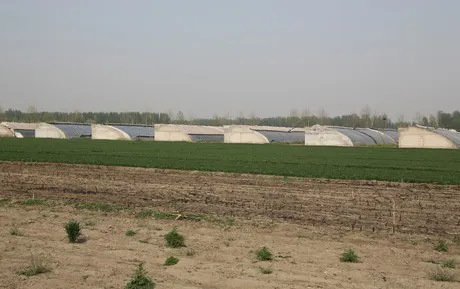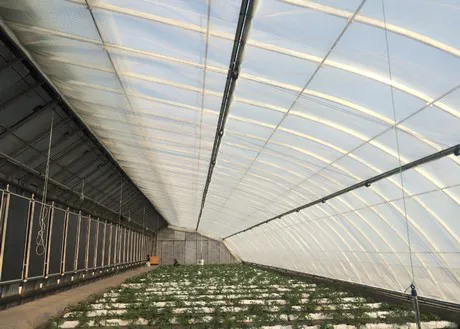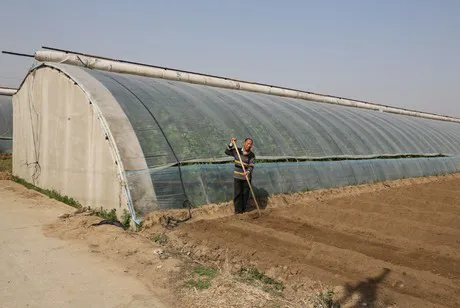Several high tech greenhouse suppliers and manufacturers are involved with the Solar Greenhouse Project of the Chinese Academy of Agricultural Sciences (CAAS) in Beijing; horticultural automation supplier Hoogendoorn, consultancy firm GreenQ, screen developer Ludvig Svensson and Wageningen University.

"In order to learn more about the current chances and possibilities of the Chinese solar greenhouse, we partnered within the CAAS-project to study this fairly large industry", said Hoogendoorn's Martin Helmich. "It is known that there are many solar greenhouses in China, but it is hard to say what the current production figures are and how efficient these greenhouses are. That is why we will monitor several standard Solar greenhouses within the CAAS project. We will experiment with basic and simple technologies in order to see how we can make small improvements with the help of our technology and knowledge. If we only improve one percent of the Chinese industry with this basic and simple approach, we are already making huge steps."

A standard Chinese solar greenhouse works with a passive technology of storing energy in the surrounding walls during the day. At night a heavy blanket is placed over the plastic film to keep the warm energy inside and to maintain a good temperature. With this system it is possible to maintain a temperature of 12 degrees Celsius at night during the winter time, while there is lying snow outside.
At first sight, the Chinese solar greenhouse is a very energy efficient greenhouse design, because it is possible for the grower to grow energy neutral. "A big problem however, is the humidity", Erik van Berkum of Hoogendoorn Asia added. "Many growers suffer of low yields and quality problems due to the high humidity. It is not possible to ventilate the greenhouse, so it is always very moist inside a solar greenhouse, which results in a high disease pressure as well. These are just a number of challenges the Chinese growers face."
"Within the CAAS project we are aiming at higher production yields and better product quality", Helmich said. "We implement small improvements to the greenhouse, not only in order to achieve more and better production, but also by taking a closer look at sustainability and efficiency. Examples are less water usage by substrate cultivation and drip irrigation, improvements in energy storage, application of solar panels and realization of a better climate with energy screens or even implementation of simple automation systems."

The trials of the CAAS projects are taking place at the commercial premises of the Shouguang Vegetable Industry Group, where they have built five new, different solar greenhouses for the trials and experiments. Over the next two years, crop consultants and technicians of Wageningen University and GreenQ will be monitoring and comparing the data outputs of the CAAS project; from climate data, production outputs and energy usage.
According to Helmich, the simple and small approach of the CAAS project is what makes it interesting. "We are experimenting with all kind of small improvements, and a grower eventually decides what to put in to practice. This doesn't require a large investment because we are not trying to sell them our advanced Dutch technology. We are helping them to develope special small technological improvements that can be adapted to their current way of growing."
Martin Helmich
